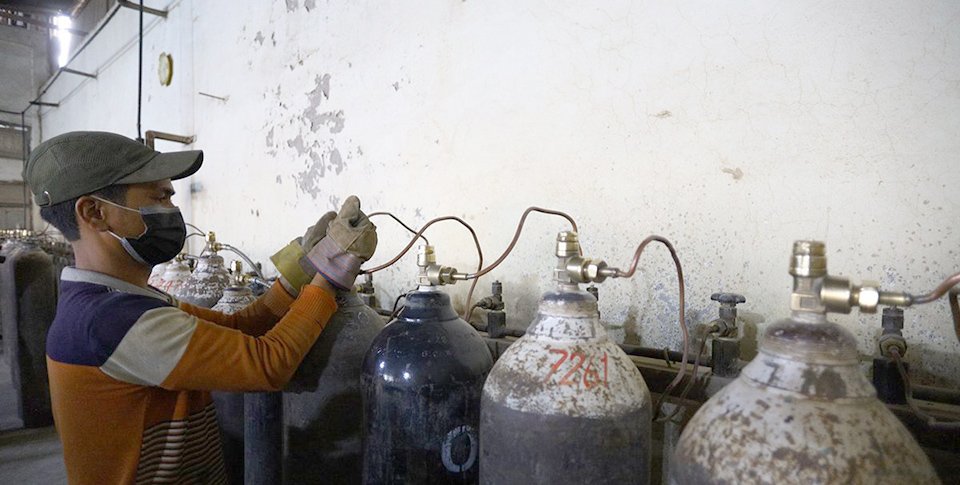Oxygen industries running out of work

By Chhetu Sherpa, Kathmandu, July 27: The industries producing oxygen in operation around the clock amid the second wave of COVID-19 are mostly out of work these days.
The industrialists have said that they are continuing to produce oxygen saying that if these oxygen cylinders are not brought to the industry, the next wave will cause oxygen shortage in the market.
Gaurav Sarada, president of Oxygen Industries Association, said that they would face an oxygen shortage if the distributed cylinders are not managed properly.
"Even though the government has allocated over 50,000 cylinders to the industries, but the industries have more than that capacity to store oxygen," said Prahlad Timilsina, director of Sita Oxygen Private Limited.
He further said that the filled cylinders would make it easy to supply oxygen in the next wave. According to Timilsina, Sita Oxygen Private Limited, Nepal's largest plant with a capacity of 550 cubic meters, can fill 3,500 cylinders in 24 hours, but the industry has been shut down due to a lack of cylinders.
Of the total 8,000 cylinders, 7200 cylinders are in the market whereas the remaining 800 cylinders are in the industry. “It would only be easy to supply the oxygen needed only if the emptied cylinders are kept full,” said Sarada.
According to the Oxygen Industries Association, a total of 20 oxygen industries are in operation, of them, eight are in the Kathmandu Valley. However, only seven industries are producing and distributing oxygen in the market currently.
There was an acute shortage of oxygen and oxygen cylinders in the market amid the second wave. The Chinese government and NRN from Oman supported with 20,000 cylinders and 567 respectively.
Around 20,000 cylinders have been brought to Nepal by the efforts of the private industrialists as well. A total of 4, 450 oxygen cylinders and 1, 364 oxygen cylinders have entered Nepal via different social organizations and organizations respectively.
According to the Ministry of Health and Population (MoHP), there are more than 250,000 cylinders in the market including imported cylinders. But now that the cylinders have reached the villages and the lack of proper management has created joblessness for many industrialists.
Recent News

Do not make expressions casting dout on election: EC
14 Apr, 2022
CM Bhatta says may New Year 2079 BS inspire positive thinking
14 Apr, 2022
Three new cases, 44 recoveries in 24 hours
14 Apr, 2022
689 climbers of 84 teams so far acquire permits for climbing various peaks this spring season
14 Apr, 2022
How the rising cost of living crisis is impacting Nepal
14 Apr, 2022
US military confirms an interstellar meteor collided with Earth
14 Apr, 2022
Valneva Covid vaccine approved for use in UK
14 Apr, 2022
Chair Prachanda highlights need of unity among Maoist, Communist forces
14 Apr, 2022
Ranbir Kapoor and Alia Bhatt: Bollywood toasts star couple on wedding
14 Apr, 2022
President Bhandari confers decorations (Photo Feature)
14 Apr, 2022










